- Преподавателю
- Иностранные языки
- Элективный курс по английскому языку The United Kingdom of Great Britain
Элективный курс по английскому языку The United Kingdom of Great Britain
| Раздел | Иностранные языки |
| Класс | - |
| Тип | Другие методич. материалы |
| Автор | Терехина М.В. |
| Дата | 25.10.2014 |
| Формат | doc |
| Изображения | Есть |
Муниципальное бюджетное образовательное учреждение
« Лицей физики, математики, информатики № 40» при ульяновском государственном университете
Элективный курс
"The United Kingdom of Great Britain"
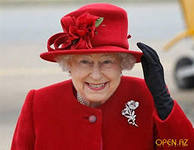
Разработала
Сазонова Марина Владимировна
учитель английского языка
Г. Ульяновск 2014г.
«Соединённое королевство
Великобритании»
( курс по выбору)
8-9 классы, 16 часов
предмет: английский язык
Учитель: Сазонова М. В.
Пояснительная записка.
Данный курс занятий предназначен для учащихся 8-9 классов, желающих расширить свой кругозор, приобрести новые знания о стране изучаемого языка.
В процессе прохождения данного курса учащиеся также смогут обогатить свой лексический запас, развивать навыки устной речи. Занятия данного курса построены так, что учащиеся имеют возможность для дальнейшего развития умений и навыков в следующих аспектах:
-
восприятие информации на слух (аудирование)
-
восприятие информации с печатных носителей
-
( ознакомительное и поисковое чтение)
-
использование полученной информации в речи (говорение)
Курс состоит из 16 занятий, носит обзорный характер и включает следующие темы:
-
Великобритания (характеристика; страны, входящие в состав королевства)
-
Политическая система
-
Достопримечательности
-
Выдающиеся люди
-
Традиции и обычаи
В каждом разделе программы предусмотрены инструменты для осуществления закрепления и контроля изученного материала: тест, вопросы по прочитанному. Организация занятий и предлагаемый лингвострановедческий материал способствует стимулированию у школьников интереса к изучаемому языку, повышению языковой культуры. В некоторых уроках автором разработки не даются конкретные материалы, например, занятие 15- инсценировка. Учитель направляет деятельность детей, Сценарии учащиеся ищут сами, так как этот вид работы сугубо индивидуален и зависит от особенностей учащихся группы. Программа курса предполагает творческий подход к учебному процессу, учитель может варьировать формы работы на занятиях.
Цели.
-
Стимулировать у учащихся стремление к дальнейшему более глубокому изучению языка.
-
Повышать социокультурную компетенцию учащихся.
-
Развивать коммуникативные умения и навыки.
-
Развивать и совершенствовать ЗУН во всех видах речевой деятельности: чтение, говорение, аудирование, письмо.
-
Воспитывать стремление к саморазвитию и самовыражению.
Методы, принципы, приёмы.
Программа курса разработана в соответствие с современными тенденциями в образовании. В основе данного курса лежит коммуникативно-ориентированный метод обучения. Коммуникативно-ориентированное обучение представляет собой модель процесса общения, готовит учащихся к практическому общению на иностранном языке. Широко используется деятельностный подход, осуществление которого способствует развитию у учащихся языковых компетенций. Учащиеся практикуют диалогическую и монологическую речь, самостоятельно работают с лингвострановедческим материалом, изучают аутентичные тексты, участвуют в подготовке презентаций и развивают творческие способности при подготовке театральных миниатюр.
Принципы
-
ситуативности
упражнения для учащихся имеют ситуативную основу и усиливают мотивы школьников говорить, читать, слушать или писать на иностранном языке;
-
коллективного взаимодействия
школьники работают в парах, группах, решая общую речемыслительную задачу;
-
жизненной ориентации обучения
выбор учебной тематики, приёмов работы отражает жизненный опыт учащихся (например: как вести себя в общественных местах, на экскурсиях).
-
соответствие заданий речемыслительной деятельности
познавательные процессы человека носят аналитико-синтетический характер. В них включены операции сопоставления и дифференциации(например: вид работы, в котором школьники сначала читают и слушают разные тексты, а затем объединяют полученную информацию).
Приёмы
-
ролевого общения (участие в речевых ситуациях)
-
формирования ориентировочной способности учащихся
учебное общение на иностранном языке приближается по своим качествам к естественному путём осуществления его как речевого взаимодействия
( формы: взаимные экспресс опросы, интервью, обмен информацией)
-
систематизации языковых знаний
знакомство с речевыми образцами, наблюдение за речевым материалом в напечатанном или звучащем тексте, его систематизация в соответствии с представлениями самих учащихся, формулирование собственных выводов.
Содержание.
-
Вводное занятие.
Общая характеристика страны.
-
Основные факты из истории Англии.
-
Лондон и его история.
-
Достопримечательности Лондона.
-
Королева Великобритании и её семья.
-
Букингемский дворец.
-
Конкурс экскурсоводов.
-
История развития английской литературы.
(Anglo-Saxon Chronicle, Beowulf, King Arthur).
9. William Shakespeare.
10-11. Известные писатели 18-19в. (Jane Austin, Lord Byron, Lewis Carroll, Charles Dickens, Sir Arthur Conan Doyle).
12. Семинар " История страны в литературных произведениях".
13-14. Театр. (История развития).
15. Театр (инсценировка).
16.Обобщающее занятие
Литература
1.Великобритания. Лингвострановедческий словарь. Составитель Г.Д. Томахин - М.: Астрель АСТ, 2001.
2. Т. Г. Лобова и др. Экзаменационные тексты на английском языке по истории и культуре. - М. : Экзамен, 2004.
3. О. А. Колыхалова, К.С. Махмурян Учитесь говорить по-английски - М.: ВЛАДОС, 2000.
4. Обучение иностранным языкам. Методическое пособие/ под редакцией М.К. Колковой - М.:КАРО, 2003.
5. А.П.Миньяр-Белоручева. English 9- М.: "Экзамен", 2003.
6. Е.А.Маслыко и др. Настольная книга преподавателя иностранного языка - Минск: "Высшая школа", 2004.
7. Практический курс английского языка/ под редакцией В.Д.Аракина.- М.: Гуманит. изд. Центр ВЛАДОС, 2002.
8. . «Введение ФГОС основного общего образования как фактор модернизации
системы образования СК»//Под науч. ред. А.А. Волкова, доктора психологических наук-Ставрополь: ГБОУ ДПО СКИРО ПК и ПРО, 2012.-170 с.
-
The United Kingdom of Great Britain and Northern Ireland.
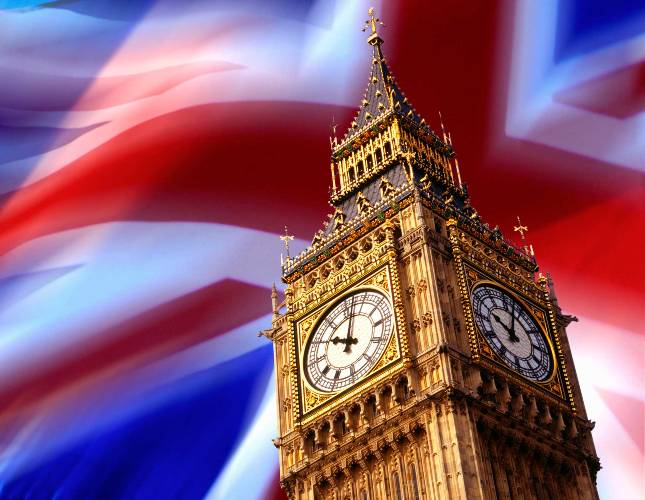
The United Kingdom of Great Britain consists of England, Scotland, Wales and Northern Ireland. All these parts of the country are represented in Parliament in London.
England is noted for its "high-tech" and car industries. London is the capital of England and the U K.
England is the largest part of the UK. It consists of the Southeast (the industrial part), the Southwest (the region where the main activity is farming), East Anglia (another farming region), the Midlands ( the largest industrial part) , the North of England (which has some of the wildest parts of the country)
Scotland is a land of mountains, lakes and romantic castles. Its symbol is a thistle; its patron saint is St. Andrew. Edinburgh is its capital. It is known as Athens of the North.
Wales is famous for its high mountains and pretty valleys, factories, coal mines, music and myths. Cardiff is the capital of Wales. The Welsh speak two languages (English and Welsh). St. David is the patron saint of Wales. On the 1st March, St. David's day , patriotic Welsh people wear a leek or a daffodil , both symbols of Wales. The Welsh call their country Cymru and themselves Cymry, a world which has the same root as
"camrador " ( friend, comrade).
Northern Ireland, with farming land, is beautiful too. Its capital is Belfast.
The UK lies on the British Isles .The English Channel and the Strait of Dover separate Britain from the continent. The climate on the British Isles is temperate. The Gulf Stream makes the climate warmer in winter and cooler in summer. There is much humidity in the air of England. Britain is known as a foggy country.
Great Britain is a constitutional monarchy, the Queen is the head of the state, but her power is limited by Parliament.
Test.
-
Great Britain is separated from the continent by…
a) the Pacific Ocean
b). The Bristol Channel c) the English Channel
-
The head of state in Britain is …
a) The Prime Minister b) The president c) The Queen
-
There are many farmlands in Britain , especially in the … of the country
a) North b) South c)west d)East
4. The symbol of Wales is…
a) a rose b)a leek c)a thistle
5. The symbol of Scotland is …
a) a thistle b) a daisy c) a tulip
6. The Welsh speak …
a) English b) Welsh c) English and Welsh
7. What city is known as Athens of the North?
a) Cardiff b) Belfast c) Edinburgh
8). St. David is the patron of…
a) England b) Scotland c) Wales
9) St. Andrew is the patron of …
a) Northern Ireland b) Scotland c) Wales
10. People of what country call themselves Cymry?
a) Wales b) Scotland c) England
2 .The history of Great Britain.
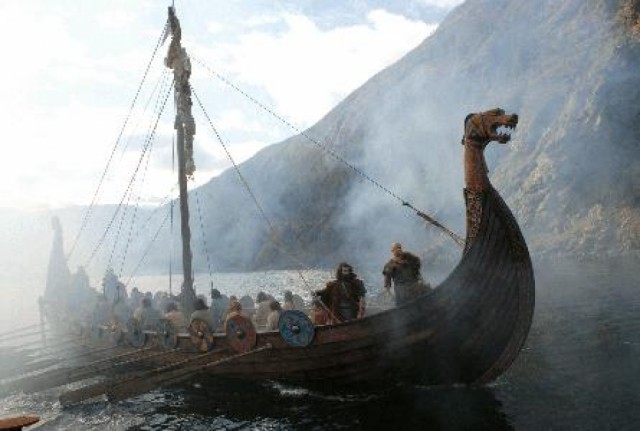
The history of the U K dates back to the ancient times. From the sixth to the third centuries BC, the British Isles were invaded by Celtic tribes. They came from central Europe, and settled in southern England. The Celts were pagans. Their priests, known as Druids, had all education in their hands. They administered justice, and made a disobedient layman an outlaw.
In AD 43, the Romans invaded southern Britain. It became a Roman colony called Britannia. The Romans set up their capital in London and built such cities as Bath, Chester, and York. The Roman invasion was not peaceful. In AD 60, the Iceni, a tribe led by Queen Boadicea, destroyed three cities, including London. In AD 122, Emperor Hadrian built a long wall to defend the border between England and Scotland. In the fourth century the Roman Empire was collapsing and the Roman legions left Britain.
From about AD 350 the Saxons, Jutes and Angles began invading south - east England. The native people could not stop the new enemy. The Celts fled north and west taking their ancient arts and languages with them. Celtic languages have disappeared from most of Europe, but still spoken in parts of Wales, Ireland and Scotland. The Anglo-Saxons were converted to Christianity spread, churches and monasteries were built in England.
About AD 790, the Vikings started to invade England. The north and east of England were settled by the Danes. The Vikings were excellent trades and navigators. They traded in silk and furs as far as Russia. In 1016, England became part of the Scandinavian empire under king Snut. In 1066 was conquered by the Normans. William Duke of Normandy, known as William the Conqueror, won the battle of Hastings and became king of England. William I established a strong centralised country under military rule. The Normans built castles all over England to control England better. Norman power was absolute, and the language of new rulers, Norman French, had a lasting effect on English. Since 1066, England has never been invaded.
For many centuries this country was known simply as England. It had a strong army and navy. It waged numerous colonial wars.
Questions.
1. Whom were the British Isles invaded by from the sixth to the third centuries BC?
2. When did southern Britain become a Roman colony?
3. Who built a long wall between England and Scotland and why?
4. When did the Roman legions leave Britain?
5. Who was the enemy of England from about AD 350?
6. In what parts of Britain are Celtic languages spoken even today?
7. When did the Vikings start to invade England?
8. Who made England the strong country under military rule?
9. What language had a lasting effect on English?
-
London and its history.
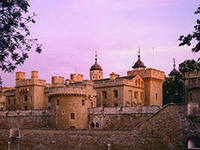
London is the capital of Great Britain. It was founded by the Romans in the first century AD. Its old name was Londinium. In the 11-th century it became the capital of England. In 1215 its citizens won the right to elect their Lord Mayor. The town experienced tremendous growth in trade and population during the late 16th and early 17th centuries.
After the Great Fire of 1666 which destroyed three-quarters of London, the town began its extensive building. London became the main center not only of the country but of the growing British Empire. During the 11th century London expanded into the suburbs. As a result of it new forms of transport were developed, including the underground railway system.
During World War II London was heavily bombed. The reconstruction that followed was of mixed quality. Replacement of industrial enterprises and docks made London a center of international trade, finance and tourism.
Today Greater London consists of 33 separate boroughs, including the City, the West End, and the East End. The City is financial center of the UK. The bank of England, the Royal Exchange, and the stock exchange are located here.
The West End is noted for its historical places and parks. These are Westminster Abbey and Westminster Cathedral, Houses of Parliament, Buckingham Palace, the principal government offices, New Scotland Yard, the Tate Gallery, and the National Gallery. The most celebrated parks are Kensington Gardens with the Victorian Gothic Albert Memorial; Hyde Park, with its famous Speaker's Corner; and Regent's Park, home of the Zoological Gardens and Regent's canal. The West End is the area of wealth and goods of high quality.
London's East End is historically associated with the Cockney dialect. It was an infamous slum during the 19th century. The port of London until recently was in the East end. The area of docks played an important part in the countries commerce.
Questions.
1. What was the first name of London? Who built it?
-
When did London become the capital of England?
-
When was the Great Fire of London? What do you know about it?
-
What are the most important parts of modern London? What can you say about each of them?
-
Name the main historical places in London.
-
Places to visit in London (history).

London's major cultural institutions include the British Museum, which houses collections of antiquities, prints, and manuscripts and the national library; the Victoria and Albert museum of decorative arts; and the music and arts complex located on the south bank of the Thames.
Westminster is now the political center of London, but originally it was a sacred place. King Edward the Confessor built a great abbey church here. It was consecrated in 1065. In 1245 Henry III replaced it with a present abbey church in the pointed Gothic style of the period.
Since William the Conqueror, every British sovereign has been crowned in the abbey. Many kings and queens are buried here. There are memorials to eminent men and women. But the most popular ones are to writers, actors, musicians in Poet's Corner. The grave of "Unknown Warrior", whose remains were brought from Flanders in 1920, is in the center of the west nave.
Alongside the Abbey Edward the Confessor ordered to construct a palace. The Palace of Westminster was the royal residence and also the country main court of law. Parliament met here since the 16th century until the 19th century. The present houses of parliament, the seat of the legislative body of the UK, were built after the old palace burnt down in 1834. On the corner next to Westminster Bridge stands St. Stephen's Tower. A light at the top of the tower at night indicates that parliament is sitting.
Saint Paul's Cathedral was designed in a classical Baroque style by Sir Christopher Wren. It was constructed between 1675 and 1710. Many famous persons are buried in the cathedral.
Trafalgar Square was named for Lord Nelson's naval victory in the battle of Trafalgar. In the center of the square is Nelson's column that includes his high statue.
Trafalgar Square is the site of the National Gallery. Traditionally political meetings are held here. Each December a large Christmas tree sent from Norway is erected in Trafalgar Square.
Big Ben is a Tower clock. It is famous for its accuracy and for its 13-ton bell, designed by Edmund Beckett, Baron Grimphorpe. Big Ben is housed in the tower at the eastern end of the Houses of parliament. The clock was named after Sir Benjamin Hall, commissioner of works at the time of its installation in 1859. Originally applied only to the bell, eventually it came to indicate the clock itself.
Complete the sentences:
1 The most famous places of interest in London are…
2. The British museum has great collections of…
3.Westminster is …
4.Since … … every British sovereign has been crowned in the abbey .
5.The grave of … is in the center of the west nave of abbey.
6.The palace of Westminster was…
7. On the corner next to Westminster bridge stands…
8.Political meetings are always held in…
9.Big Ben was named after…
10. Big Ben is famous for …
Questions.
-
Name the most famous places of interest in the UK.
2. What do you know about the Tower of London?
3. What do you know about St. Paul's Cathedral?
…
-
The Queen of the UK.
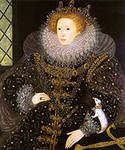

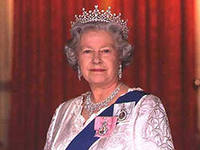
Queen Elisabeth (1533- 1603) Queen Victoria (1819-1901) Elisabeth II (1926)
Great Britain is a constitutional monarchy. The queen is the head of state, but her power is limited be parliament. The royal family plays a very important role in the country. In the history of Britain there were certain Kings and Queens whose names are specially remembered in the country. One of them was King Henry the VIII (1491-1547). Most people remember him because he had six wives. But in fact he was a very important monarch. Under him Britain became independent of the Roman Catholic Church. In 1534 the Parliament named Henry head of the Church of England. And gave the King all the power in the country.
Henry's daughter, Elisabeth (1533- 1603) became the queen in 1558. She is known for saying «I know I have the body of a week and feeble woman, but I have a heart a stomach of a King…" during her reign England became very important in European politics, arts and especially theatre developed, the country became powerful.
Another strong queen was Queen Victoria (1819-1901), whose monument you can see in front of Buckingham Palace. Queen Victoria came to the throne as a young woman in 1837 and reigned until her death. She ruled for the longest period in the English history, for 64 years. Victoria married a German, Prince Albert, but he died at the age of 42in 1861. It was the great tragedy for Queen Victoria. She left London but there are places in London which remind us of her love. One of them is the royal Albert Hall- a very large concert hall in front of the Albert's Hall there is a monument to Prince Albert. Another place is the Victoria and Albert Museum with its rich collections of works of arts.
Queen Victoria's granddaughter, Elisabeth II is on the British throne now. The Queen's title in the UK is Elisabeth the second, by the Grace of God, of the United Kingdom of Great Britain and Northern Ireland and of her other realms and territories Queen, Head of the Commonwealth, defender of the faith, etc. etc. etc.
The parents of Elisabeth II: the Duke of York, later King George VI and Mary, the duchess of York.
Elisabeth II was born in Windsor on 21 April 1926. Married Prince Philip in 1947. Her first child Prince Charles was born in 1948. She came to the throne in 1952, and was crowned in Westminster Abbey on 2June 1953. Elisabeth II had four children: Prince Charles, Princes Ann, Prince Andrew, and Prince Edward.

From "">
Despite its ups and downs, the Royal Family has survived the installation of a Republic - from 1649-1660 - and retained a prominent place in British society.
The current head of the house, Queen Elizabeth II, who ascended to the throne in 1952, is married to Prince Philip, the Duke of Edinburgh. Their son and heir, Prince Charles, has two sons - Prince William and Prince Harry - whose mother, Princess Diana, was killed in a car crash in 1997. When the Prince of Wales remarried, in 2005, to his longtime companion Camilla Parker-Bowles, their union met with a mixed response. Public feeling for the new Duchess of Cornwall has since warmed, however.
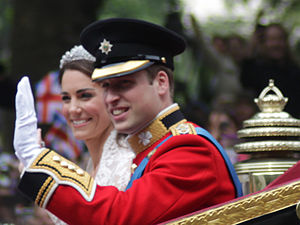
The wedding of Prince William, Duke of Cambridge, and Catherine Middleton took place on 29 April 2011 at Westminster Abbey in London. The groom, Prince William, Duke of Cambridge, is the eldest son of Charles, Prince of Wales, and second, after his father, in line to succeed his grandmother, Queen Elizabeth II.
The bride, Catherine "Kate" Middleton is the eldest of three children of Michael and Carole Middleton of Bucklebury, Berkshire.
23 JULY 2013 Prince William and Kate Middleton have given their royal baby the name George Alexander Louis.
"The Duke and Duchess of Cambridge are delighted to announce that they have named their son George Alexander Louis," read a statement from Kensington Palace.
"The baby will be known as His Royal Highness Prince George of Cambridge."
-
Buckingham Palace.

Buckingham Palace is like a small town with a police station, two post offices, a hospital, a bar, 2 sport clubs, a disco, a cinema and swimming pool.
There are 600 rooms and 3 miles of red carpet. Two men work full-time to look after 300 clocks, about 700 hundred people work in the Palace.
When the Queen gets up in the morning, 7 people look after her clothes. One starts her bath, one prepares her clothes and one feeds the royal dogs. She has 8 or 9 dogs; they sleep in their own bedroom.
When the Queen invites a lot of people for dinner it takes 3 days to prepare the table and 3 days to do washing up.
Every day 11.30a.m. there is changing the guards near the Buckingham Palace, a lot of tourists come to see this changing
If the Queen is in the Palace you can see the flag on the Palace.
-
The guide casting.
Учащиеся готовят устные сообщения о достопримечательностях Великобритании. Участвуя в конкурсе гидов, ребята проводят импровизированную экскурсию. Группа ребят, играющая роль туристов выбирает лучшего гида.
-
Anglo-Saxon or old English literature.
The Germanic tribes which settled in England brought with them reminiscences of valorous deeds performed by historical and legendary warriors during the Great Migrations. Beowulf, an epic of Old English, dating from as early as the 8th century, is the earliest long work of literature in English
The most important Old English work and the only epic to survive in entirely. The critical events in the poem are the slaying of the monster Grendel and the Grendel's mother by the hero Beowulf, and Beowulf's battle with a dragon, in which he is mortally wounded.
The poem is named after its hero, represented as a champion (later king) of the Gaetas, a Scandinavian tribe living north of the Danes (i.e. in what is now a part of Sweden). The action of the poem falls in tow main parts. In part one, the young hero goes to Denmark to rid the Danish royal hall of Grendel and succeeds in slaying both Grendel and Grendel's mother (a criature fully as fearsome as her offspring). In part two, the aged hero defends the Gaetasagainst the dragon, which he kills at the cost of his own life.
An unknown author was an Englishman learned in the traditional heroic lore of the Germanic peoples. Through his hero he sought to glorify the ideals of heroism which made part of the moral and poetic heritage common to the English and other Germanic nations. He succeeded so well that his poem is reckoned among the masterpieces of world literature.
Complete the sentences.
-
The earliest long work in English is…
-
Gaetas is …
-
The action of the poem falls into …main parts.
-
Grendel and Grenden's mother are…
-
The hero goes to Denmark to…
-
At the end of the legend the main hero …
7. The ideals of … represented in this legend are common to the English and other Germanic nations.
-
Alfred the Great ( 849 -901), a King of West Saxons; after defeating the Danes became overlord of all England, so that he is often reckoned the first English King. His work for education was so supreme importance: he founded many schools and brought teachers from all parts of the world.
His own writings included translations into English of Bede's and other authors' works. The earlier part of the Anglo- Saxon Chronicle may be his own work.
-
The Anglo-Saxon chronicle, also the Chronicles, historical record books kept at various English monasteries from the 9th to 12th centuries, they are the first sours of English history. The Chronicles sketchily surveyed world history from the birth of Christ, with fuller accounts beginning about 450 AD, traditional date of the Anglo-Saxon invasion of England. They were the first history of a western nation, written in its own language, and have been called the most important work in English before the Norman Conquest.
-
Bede (673-735), the most learned Englishman of his age, writing in Latin, known as" Bede the Venerable". He is an author of about 40 books on theology, history and science. His two great works are: The Ecclesiastical History of the English people, De Nature Rerum (an encyclopedia of the sciences as then known).
-
Old English, the English language from the 5th century until about 1150. In the 5th century the Angles and Saxons of Germany settled in Britain and brought their language to the southern part of the island-the region that was called «Angleland", or England. After the Norman Conquest in 1066 the Norman French language influenced Old English, and Middle Middle English developed.
Questions.
-
Who was the first English king? What did he do for education?
2. What are the Anglo-Saxon Chronicles?
3. What is the traditional date of the Anglo-Saxon invasion?
4.Why are the Chronicles considered to be the most important work in English before the Norman conquest?
5.Who was " Bede the Venerable"? What are his two great works?
Middle English literature.
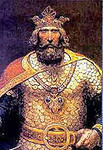
-
Arthurian legend, the stories about Arthur, who became king of England when he pulled out the sword (Excalibur) in the stone, which no one except the king could do. His court at Camelot was famous for bravery, romantic love, and magic which was practiced by the magician Merlin and the Arthur's sister Morgan Le Fay. Here, at the round table, sat the bravest and most noble knights in the land (the Knights of the Round Table), Sir Lancelot, Sir Galahad, Sir Bedivere and others. Arthur's power began to fail when he discovered the love between his wife, Guinevere, and his best friend, Lancelot.
Then began the long search for the Holly Grail which was finally found by Galahad. Arthur's power returned and he went into battle to save England from Mordred whom he killed but Arthur himself was seriously wounded. At the end Arthur was taken to his final resting place at Avalon by the Lady of the Lake. It is said that Arthur will return if England is ever in danger.
-
Geoffrey Chaucer is one of the greatest English poets in the English language. The Canterbury Tales with its unforgettable pilgrims, exchanging stories and verbal barbs on the road to Canterbury is his masterpiece.
Chaucer is called «the father of English Poetry". He was the first great poet to write in the English language. He was also the first to be buried in the Poet's Corner in Westminster Abby.
9.William Shakespeare( 1564 - 1616).
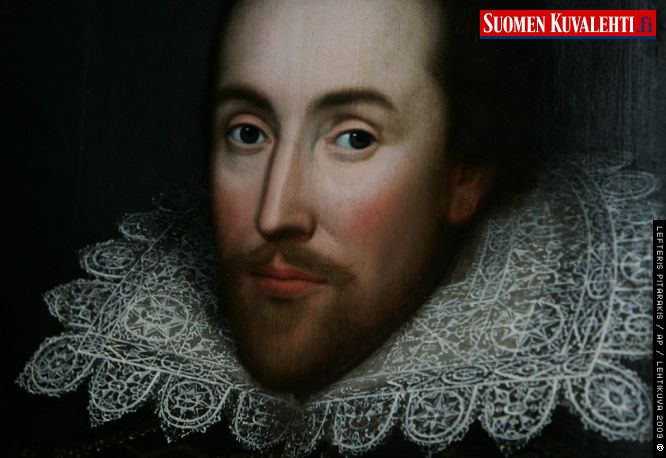
William Shakespeare is generally acknowledged to have been British finest playwright and one of the best poets
Little is known about Shakespeare life. He was born in April 1564 in Stratford -upon-Avon. His father was one time Mayor of the town; William's mother belongs to the landed gentry of Warwickshire. The boy went to Stratford Grammar School. In 1582, at the age of 18, he married Anne Hathaway, a farmer's daughter 8 years older than himself. They had 3 children. Then Shakespeare became an actor and came to London before, 1589, and spent most of his life there. His success as a playwright enabled him to retired to Stratford, where he died in April 1616 and was buried in the local church
As a wealthy and highly respected citizen.
His plays show the great understanding of human activities of all kinds. The plays are usually described as comedies, tragedies, histories but this is too simple as his works don't fall into any one category.
Shakespeare spent most of career in London as an actor, playwright, and manager of the Globe Theatre. During Shakespeare's lifetime, most of his plays were performed in the Globe Theatre, a wooden theatre in London. It was destroyed in the 17th century and now is rebuilt exactly as it was and visitors can experience what it was like to go to the theatre 400 years ago.
Shakespeare's poems especially his sonnets, show his extraordinary powers of expression and his depth of emotional understanding.
His work has had a great influence on English and many familiar sayings and quotations come from his works, many of his expressions become part of the language.
" Alas poor Yorick" , words from the play Hamlet.
" All the world's stage and, all the men and women merely players", the beginning of the play As You Like It. It is also called The Seven Ages of Man ( many periods in his life: infant, schoolboy, lover, soldier, judge, foolish old man, and " second childishness and mere oblivion")
" To be or not to be", words from the play Hamlet.
The most famous works are:
Hamlet (the most famous tragedy 1600)
King Lear ( a tragedy 1605 about an old king who wanted to divide all his kingdom among his 3 daughters according how mach each says she loves him. He was mistaken and gave his kingdom to the two daughters who don't love him at all; their actions reduce him to poverty and to madness. His youngest daughter Cordelia, whom he offended first, remains faithful to him.
Macbeth, a tragedy (1605)
A Midsummer Night's dream a comedy (1595)
Othello, a famous tragedy (1604)
Romeo and Juliet, a tragedy (1594) about two "star-crossed» lovers
Twelfth Night, a comedy (1599)
10.Literature of the 19th century.
 .
. 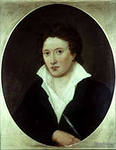

G.G. Byron P.B. Shelley Jane Austin
English literature of the 19th century is called romantic. Romanticism was a movement in literature and the fine arts which began in the 19th century and stressed personal emotion, free play of imagination and freedom from the rules of form.
Among the leaders of romanticism in English literature were Lord Byron, Samuel Taylor Coleridge, John Keats, Percy Bysshe Shelley and William Wordsworth. Some of them belonged to the so called
«Lake School". These poets lived in the Lake District and drew inspiration from the scenery there.
The romantic period saw the growth of individualism and political republicanism, and the American and French revolutions, which greatly affected the romantic poets. The most outstanding of them was Lord George Gordon Byron (1788 - 1824), a handsome and daring English poet of the early 19th century, known for his rebelliousness, and his air of brooding.
Byron became famous with the publication of Child Harold and his Oriental Romances, but is now known for his Don Juan, a long satirical poem.
Byron actually became involved in Italian and Greek revolutionary activity. He died of a fever in Greece, where he had gone to take a part in the Greek war of independence against Turks.
Byron introduced in literature so-called "Byronic Hero", and isolated romantic individualist who finds reality and deity only within himself. A Byronic hero is always a melancholy and rebellious person.
Percy Bysshe Shelley supported many of Byron's ideas. Shelley's wife Mary Wollstonecraft wrote Frankenstein.
Realistic trends are visible in the works of Jane Austen. She is famous for her witty irony and perceptive comments about people and their social relationships.
Jane Austin (1775- 1817): Sense and Sensibility (1811), Pride and Prejudice (1813), Emma ( 1816) .
P.B. Shelley (1792-1851): Ode to the West Wind (1820), To a Skylark (1820), Adonais (1821).
W. Wordsworth (1770 - 1850): The Prelude (1805), Lyrical Ballads (1798), Tintern Abbey.
Twilight
(by G.G. Byron).
It is the hour when from the boughs
The nightingale's high note is heard;
It is the hour when lover's vows
Seem sweet in every whispered word;
And gentle winds and waters near,
Makes music to the lonely ear.
Each flower the dews have lightly wet,
And in the sky the stars are met
And on the wave is deeper blue,
And on the leaf a browner hue,
And in the heaven that clear obscure,
So softly dark and darkly pure,
Which follows the decline of day
As twilight melt beneath the Moon away.
11. Literature of the 19th century (second half).


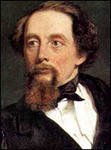
Sir Arthur Conan Doyle Lewis Carroll Charles Dickens
In Britain, the 19th century is traditionally called the Victorian age. Victorian is a descriptive term for the time when Victoria was Queen of England, from 1837 to 1901. The Victorian period is known as a time of industrial progress, colonial expansion, and public fastidiousness in morals.
The Victorian age might better be described, however, as one of prose. High Victorian literature
(1830 - 1880) is dominated by Charles Dickens and William M. Thackeray. Late Victorian and Edwardian literature (1880 - 1920) has been seen as dominated by the work of the subtle, demanding expatriate American Henry James (1843 - 1916) and by that of the novelist patronizingly dismissed by James as the "good little Thomas Hardy".
By the closing years of the 19th century such mid-Victorian moral confidence had began to sound oppressively, even comically, outmoded. Oscar Wilde mocked at the very idea in the title of his Trivial Comedy for Serious People and The Importance of being Earnest.
-
Lewis Carroll ( real name Charles Lutwidge Dodson ) ( 1832 - 98), an English writer and lecturer in mathematics at oxford university, famous for the classic children's stories Alice's Advantages in Wonderland ( 1865) and Through the Looking Glass ( 1871).
-
Sir Arthur Conan Doyle (1859 - 1930), best known for creating the creating the character of detective Sherlock Holmes.
Conan Doyle also wrote historical novels Micah Clarke (1889), the White Company (1890), the scientific romance The Lost World (1912).
-
Charles Dickens (1812 -70), an English novelist, considered by many to be the greatest one of all. His high reputation rests on his creation of a range of memorable characters, on his descriptions of the bad conditions in which poor people lived in the 19th century Britain, and above all on his ability as a story teller to make his readers laugh and cry.
His works are The Pickwick Papers (1837), Oliver Twist 9 based on Dickens' own harsh boyhood), Dombey and Son, David Copperfield.
The end of the 19th century was marked by the growing number of the limericks.
Limerick is a short poem, usually about something funny or improbably. It is always 5 lines long and has a characteristic rhyming scheme: the first and second lines rhyme with the fifth line, and the shorter third line rhymes with the shorter fourth.
The name «limerick" allegedly comes from Limerick, a town in Ireland, said to back the social gatherings where the group sang " Will you come up to limerick?" after each set of verses.
There was a young man from Kew
Who found a dead mouse in his stew?
Said the waiter, «Don't shout
Or wave it about,
Or the rest will want it too!"
12. The history of the country in the literature.
Семинарское занятие. Учащиеся делятся на группы и готовят вопросы по изученному материалу. Форма: " Вопрос-ответ". Если группа не отвечает на вопрос соперников, она получает штрафное очко.
(В качестве альтернативы на данном занятии возможно чтение литературы в оригинале.)
13. Theatre.

The Globe theatre
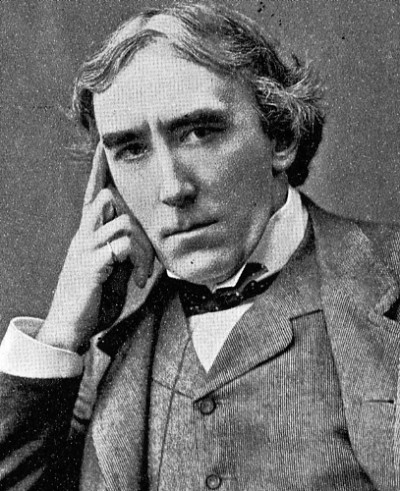

Henry Irving . Nell Gwynn
The art of acting.
From the fall of the Roman Empire until the 10th century, acting hardly existed as an art in Western Europe; only the wandering minstrels gave entertainments in castles and at fairs. In England, the first real actors were amateurs who performed Miracle and morality plays which were religious in character.
In the Elizabethan age, the first professional theatres were opened. At the time of Shakespeare there were at least six companies of actors.
Shakespeare himself joined the Earl of Leisester's company, which under James I became known as the «King's Men". There were also companies of boy actors. All the women's parts were played by boys. It was very difficult for most actors to earn a living on the stage, even in a London company, and many of them fell into dept.
When Shakespeare arrived in London in 1599, the acting was very crude and conventional. There was almost no scenery, and the actors were dressed in the costumes of their day. But when "The Globe" was opened to the public in 1599, it started a golden age of the theatre in England.
In the first half of the 17th century the influence of the Puritans was bad for the popular theatre and it was not before the restoration of the monarchy in 1660 that theatre going again became a popular habit. The most popular plays were comedies. The first part played by the actress was that one of Desdemona. Nell Gwynn was the first English actress.
By the beginning of the 18th century the most popular type of play was the sentimental comedy. The acting was artificial probably dew to the influence of French actors.
But, later, under the influence of David Garrick and some other actors, acting became much more naturalistic.
David Garrick was one of the greatest actors known. But even at his time acting was not very popular. An actor whose acting had offended the audience had to ask pardon on his knees before a full house if he wanted to continue his profession.
During the 19th century acting became more and more naturalistic. Like in Shakespeare's time, the best actors understood the importance of the team work of the company.
One of the most famous actors of that time was Henry Irving. He was the first actor to be knighted.
By the 1920s naturalistic acting reached a peak in the performance of Sir Gerald Du Maurier he hardly appeared to be acting at all.
At present most acting still continued to be naturalistic. Designers make the settings as realistic as possible. Modern producers are trying out new styles of acting. Some go back to Greek methods with a revival of chorus; others are making use of the audience in helping to interpret a play.
Questions.
-
Who were the first real actors? What did they perform?
-
When were the first professional theatres opened?
3. Did women take part in the performances in Shakespeare's time?
4. When was the Globe opened?
-
What was the first part played by actress?
6. What can you say about the acting at the beginning of the 18th century?
7. What was David Garrick famous for ?
8. Who was the first actor to be knighted?
14. Theatre.
One of the main reasons for so many people wanting to visit Britain is its enviable reputation in the performing arts. The country is exactly what Shakespeare described, an «isle of noises, sound and sweet airs that give delight and hurt not".
Ballet and opera have become very popular in Britain, and are performed by a number of companies. Two of the best known are the Royal Opera and the Royal Ballet, both based at the Royal House at Covent Garden in London. The English national Opera, with its home at the Coliseum Theatre, London, specializes in performances of opera in English. The Welsh National Opera and the Scottish Opera both tour the whole of Britain and have become established as major companies.
There are today about 200 professional theatres in Britain. The center of theatrical activity is London, where are some 40 principle theatres in the West End and several more in the suburbs, and figure doesn't include, ballet, amateur dramatics, or the semi-private theatre clubs (altogether more than 50).
There are many annual festivals of theatre, dance and music. One of the most important festivals in the Edinburgh International Festival. The Edinburgh «Fringe" performances are as important a part of the festival as the main productions and offer and excremental work.
Among the companies receiving governments grants are the Royal Shakespeare Company, the Covent Garden Opera House and Mermaid.
It is necessary to mention that theatres in Britain are divided into repertory and commercial ones.
A repertory theatre has a regular company that puts on a changing programme. The National and the Royal Shakespeare Theatre, for example, are the repertory theatres: their companies present three or four plays in rotation for several weeks.
There are many commercial theatres in Britain (mostly in the West End) where one play is usually performed while it remains successful with the public.
15. The art of acting.
Учащиеся разыгрывают миниатюры на английском языке.
( Преподаватель заранее предлагает ребятам разделиться на группы и выбрать сюжет).
16. Conversation.
Беседа по изученному материалу. Мини сочинение - отзыв.
Литература
-
Великобритания: Лингвострановедческий словарь: Литература. Театр. Кино. Музыка. Танец. Балет. Живопись. Скульптура. Архитектура. Дизайн.СМИ/Сост. Г. Д. Томахин.- М.:ООО « Издательство АСТ»: ООО « Издательство Астрель», 2001.- 336с.
-
Интернет ресурсы: livelib.ru/
-
weddingplannermag.com/tag/kate-william/


